The force magnitude F is slowly increased. What is its value just before the block is lifted (completely) off the floor ?
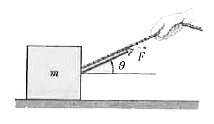
If F is the minimum force for which the block leaves the floor, then FN=0 and the y component of the acceleration vanishes.
Calculation: The y component of the second law becomes
Fsinθ−mg=0
⇒F=mgsinθ=(5.00 kg)(9.80 m/s2)sin25.0∘=116 N.
(c) What is the magnitude of the block.s acceleration just before it is lifted (completely) off the floor ?
Calculation: The acceleration is still in the x direction and is still given by the equation developed in part (a):
a=Fcosθm=(116 N)cos25.0∘5.00 kg=21.0m/s2.
Topper's Solved these Questions
- BOOK - RESNICK AND HALLIDAYCHAPTER - FORCE AND MOTION - I EXERCISE - CHECKPOINT5videos
FORCE AND MOTION - I
- BOOK - RESNICK AND HALLIDAYCHAPTER - FORCE AND MOTION - I EXERCISE - PROBLEMS52videos
FORCE AND MOTION - I
- BOOK - RESNICK AND HALLIDAYCHAPTER - FLUIDSEXERCISE - PRACTICE QUESTIONS (Integer Type )5videos
FLUIDS
- BOOK - RESNICK AND HALLIDAYCHAPTER - FORCE AND MOTION-IIEXERCISE - PRACTICE QUESTIONS (Integer Type)1videos
FORCE AND MOTION-II
Similar Questions
What is the maximum value of the force F such that the block shown in the figure does not move?
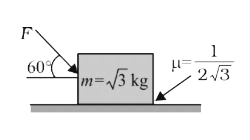 View Solution
View SolutionA horizontal force of magnitude 41.0 N pushes a block of mass 4.00 kg across a floor where the coefficient of kinetic friction is 0.600. (a) How much work is done by that applied force on the block-floor system when the block slides through a displacement of 2.00 m across the floor ? (b) During that displacement, the thermal energy of the block increases by 40.0 J. What is the increase in thermal energy of the floor ? (c) What is the increase in the kinetic energy of the block ?
View Solution
Knowledge Check
- Question 1 - Select One
A block of mass m is placed on a rough floor of a lift . The coefficient of friction between the block and the floor is μ. When the lift falls freely, the block is pulled horizontally on the floor. What is the force of friction -
AμmgBμmg/2C2μmgDNone of these - Question 2 - Select One
A block is being pulled by a force F on a long frictionless level floor. Magnitude of the force is gradually increases from zero until the block lifts off the floor. Immediately before the block leaves the floor, its acceleration is
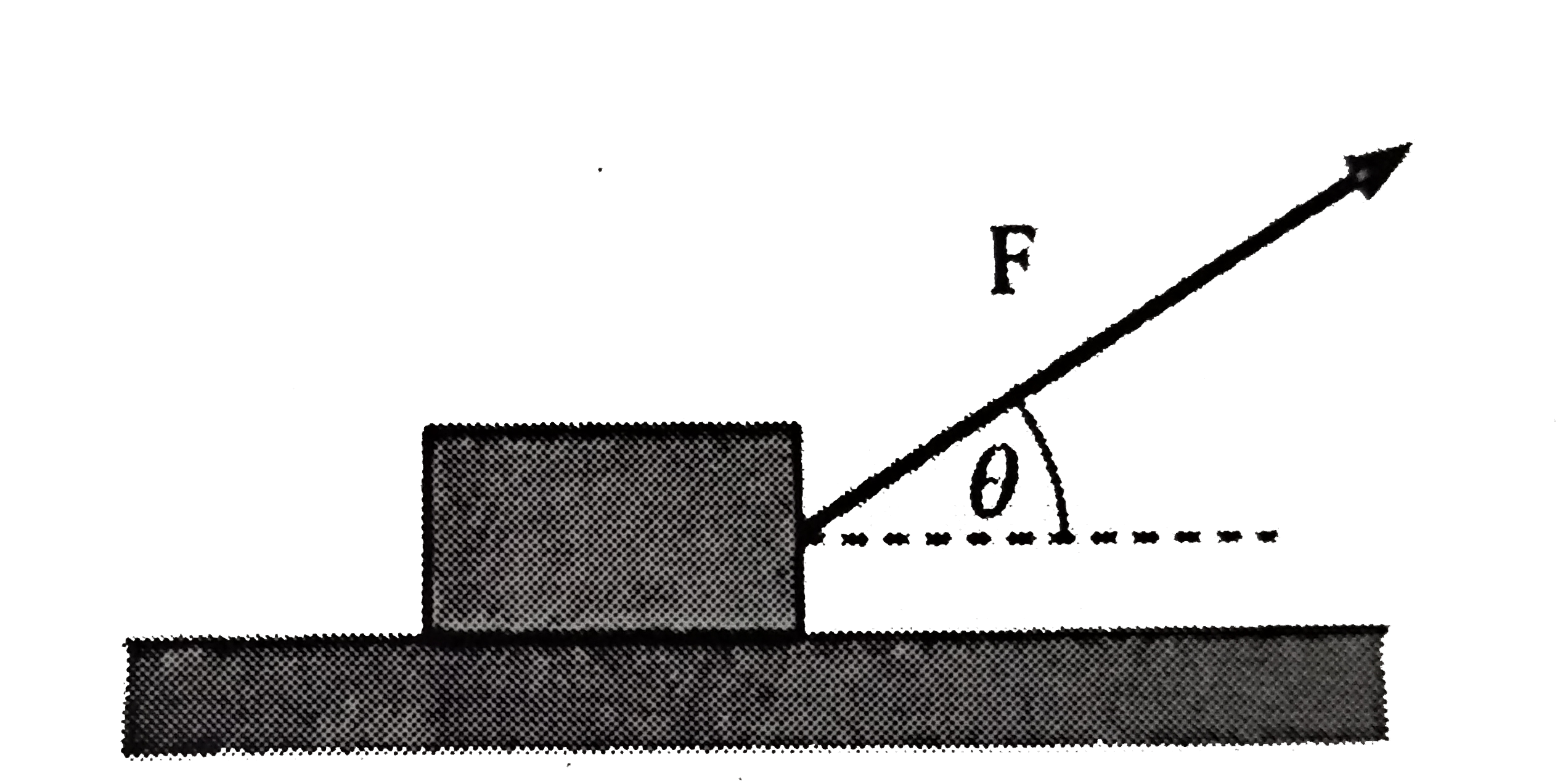 AgcosθBgcotθCgsinθDgtanθ
AgcosθBgcotθCgsinθDgtanθ - Question 3 - Select One
Force F is graduallly increased from zero .Determine whether the block will first slide or lift up?
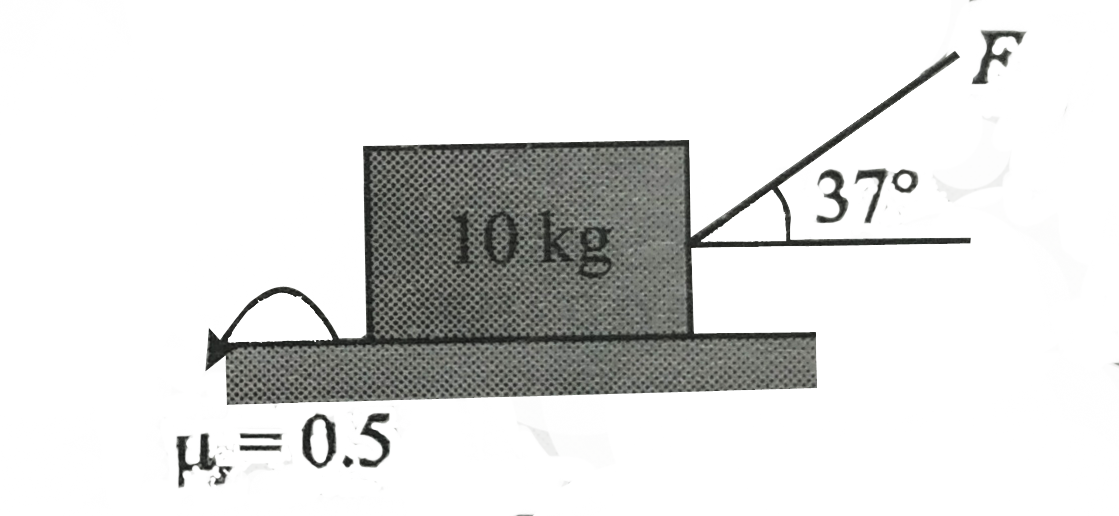 ASlideBLiftCCannot be determinedDNone of the above
ASlideBLiftCCannot be determinedDNone of the above
A block of mass m placed on an incline just begins to slide when inclination of the incline is made θ0=45∘. With inclination equal to θ=30∘, the block is placed on the incline. A horizontal force (F) parallel to the surface of the incline is applied to the block. The force F is gradually increased from zero. At what angle a to the force F will the block first begin to slide?
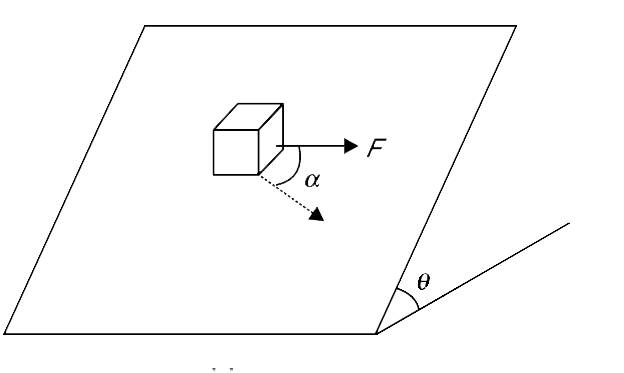 View Solution
View SolutionA block of mass 2kg is placed on a trolley of mass 20 kg free to move on a frictionless floor. What are the frictional force, accelerations of the block and trolley if the block is pulled by a force of 3 N ? The coefficient of friction between block and trolley is 0.25. What will be the values of all three if the block is pulled by 8 N force ? At what value of the applied force will the bodies just tend to separate ?
[Hint : So long as the force applied does not produce the limiting frictional force the two will move with common acceleration. When the force applied exceeds that limiting value the block will move on the trolley with a different acceleration]View SolutionTwo blocks are in contact on a frictionless table. A horizontal force is applied to the larger block, as shown in Fig. 5-53. (a) If m1=2.3 kg,m2=1.2 kg, and F = 3.2 N, find the magnitude of the force between the two blocks. (b) Show that if a force of the same magnitude F is applied to the smaller block but in the opposite direction, the magnitude of the force between the blocks is 2.1 N, which is not the same value calculated in (a). (c) Explain the difference.
 View Solution
View SolutionA block of mass m rests on a horizontal floor for which coefficient of friction is μ . Find the magnitude and the direction of force that should be applied to just move the block so that the applied force is minimum.
View SolutionA block of mass m slides along a floor while a force of magnitude F is applied to it at an angle θ as shown in figure. The coefficient of kinetic friction is μr. Then, the block's acceleration 'a' is given by:
(g is acceleration due to gravity)
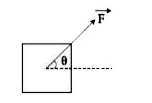 View Solution
View Solution

